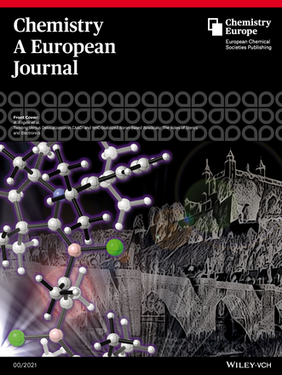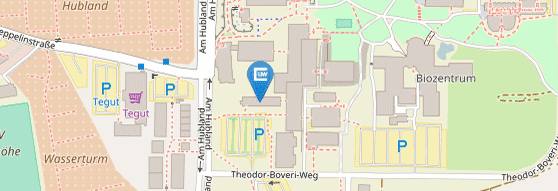Publikation der AKs Engel und Engels Invited Cover bei Chemistry - A European Journal
25.01.2021Twisting versus Delocalization in CAAC- and NHC-stabilized Boron-Based Biradicals: The Roles of Sterics and Electronics ist Invited Cover bei Chem. Eur. J.
In der Publikation, die in Kooperation der Würzburger Arbeitskreise von Prof. H. Braunschweig, Prof. V. Engel und Prof. B. Engels im Rahmen des GRK2112 entstanden ist, werden die faszinierenden Eigenschaften Bor-verbrückter Systeme untersucht, die durch CAAC- und NHC-Liganden stabillisiert werden. Erstaunlich ist dabei: Bereits bei kleinen Änderungen der Liganden variiert die elektronische Struktur der Moleküle von einer geschlossenschaligen zu einer biradikalischen Struktur.
Den Forschern wurden ein paar Fragen rund um die Publikation und das Invited Cover gestellt:
What are the most significant results of this study?
Boron chemistry offers many systems in which slight variations in structure lead to drastic geometrical and electronic perturbations. This article explains the reasons for the observed variations observed in a system consisting of two boron centers stabilized by CAAC or NHC donors and connected by C2R2 (R = Et, Me, H) bridges. For CAAC and R = Me, Et the bridge is twisted, and the molecule is a biradical. For CAAC and R = H the bridge is not twisted, leading to a closed-shell structure. For NHC-stabilized systems we exclusively predict closed-shell molecules with partially twisted bridges, which is attributed to a delicate interplay of steric and electronic effects.
What was the inspiration for this cover design?
The inspiration came from the Old Bridge over the Main River, a landmark of the city of Würzburg, Germany. As the paper deals with the influence of distinct bridging motifs on the electrostructural properties of boron-based biradicals, we portrayed the molecular and the stone bridges side by side. A light flare highlights the molecular bridge connecting the boron radicals. The image of the Old Bridge is altered from a photo taken by coauthor Dr. Felipe Fantuzzi, where the mighty Marienberg Fortress and its vineyard are also shown.
What other topics are you working on at the moment?
As three separate research groups were involved in this work, the research of the coauthors covers a wide swathe of topics. In addition to a close cooperation with the Braunschweig group in the areas of boron and beryllium chemistry, the group of Bernd Engels investigates the photophysics of organic semiconductors. Another interest of the group is the development of computational methods for correctly describing radicals and biradicals. In a completely different topic, the Engels group is also investigating the inhibition mechanisms of covalent inhibitors of cysteine proteases and other proteases. The Braunschweig research group’s interests lie in exploring the chemistry of reactive main-group and transition-metal-containing molecules, particularly those containing low-valent and/or low-coordinate main-group elements. Currently, in addition to its longstanding interest in boron chemistry, the Braunschweig group is exploring the chemistry of low-valent beryllium and aluminium species. Work in the group is motivated firstly by a desire to prepare compounds with novel bonding interactions and electronic states, and their subsequent reactivity and applications in catalysis, small-molecule activation, and inclusion in polymers and extended materials. The group of Volker Engel performs theoretical studies on femtosecond time-resolved spectroscopy of energy and charge transfer processes.
Zurück



